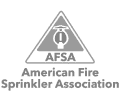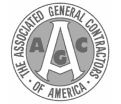Fire Prevention Methods for Restaurants
Commercial kitchens are very dangerous places, especially if your employees are not following proper safety procedures. Knife injuries are the most common concern, but fire represents the greatest potential liability for a restaurant. Fire damage destroys valuable tools, ruins food, and may require months of downtime to repair. By taking the right steps to prevent fire damage, you can limit your exposure and reduce your risk of fire related problems.
Proper Systems
For small, non-grease fires, a traditional fire extinguisher works just fine; however, you need to have a Type K extinguisher on hand near the grill or fryer to help combat cooking oil fires. In addition, an overhead fire suppression system is mandated by the government as an emergency safety measure for kitchen fires. Drill your team on proper fire procedures for the best results.
System Inspection
Your fire suppression system is a necessary part of your restaurant’s security system. The last thing that you want is to find that your system is not working as intended when you try to engage it to stop a fire in the kitchen. For this reason, the NFPA (National Fire Protection Association) requires system inspections at least twice a year.
Vent Hood & Grease Trap Cleaning
The greatest fire danger in the kitchen is grease, and the vent hood is where most of the grease collects. The high temperatures and proximity to fire increase the risk that the grease will ignite. If you serve a lot of fried foods, or you use your grill for most food orders, you will need to clean the vent at least every quarter, though monthly cleanings might be recommended. Food and other debris in the grease traps are at risk of ignition when exposed to hot oil. Keep the grease traps cleaned throughout the shift, at the end of the day and give them a thorough cleaning with your vent hood.
Keep the Kitchen Clean
Finally, clutter, hair, and loose clothing are easy kindling for small fires. Keep the floors and work spaces clear of debris, packaging, and trash. Secure long hair so it doesn’t get anywhere close to an open flame, and make sure all clothing fits properly to reduce fire risks.
Preventing fires in your restaurant requires dedication to cleanliness and regularly scheduled maintenance programs. Work with your vent hood and fire system inspection contractors to schedule automatically recurring appointments, so you never have to worry about scheduling an appointment again.
IMPLEMENT A FIRE SAFETY PLAN
Above all, you should have as many implements as possible in place to keep your commercial kitchen safe from fire. However, it is equally important to have a backup plan just in case all else fails. Work with a professional fire protection services company to design a commercial kitchen fire safety plan, and then work with your employees to make sure everyone knows their roles and responsibilities.
POST SMOKING RESTRICTIONS
Post smoking restrictions—smoking is banned in all Texas restaurants and bars (excluding cigar bars and tobacco shops). Even so, you should post “No Smoking” signs along the outside of your restaurant, especially in areas where discarded cigarettes could end up on top of mulch, wood chips, or any other flammable objects.















